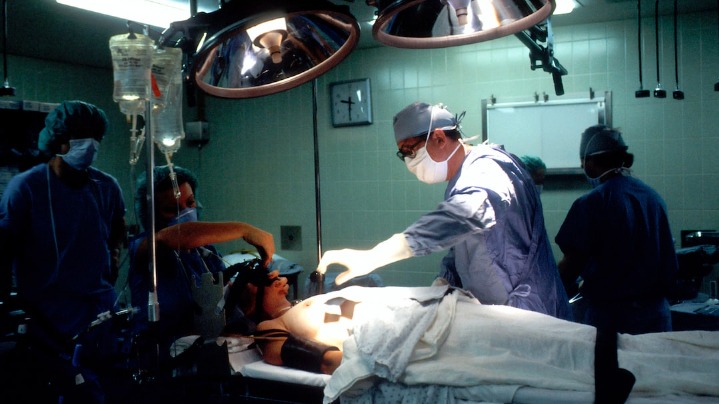
Oral Cancer – Causes, Signs, Symptoms, Treatment and Prognosis
Oral cancer represents any cancerous tissue growth in the mouth, a subtype of head and neck cancer. Oral cancer includes cancers of the tongue, cheeks, lips, floor of the mouth, sinuses, throat, and hard and soft palate. This type of cancer can be hazardous and life-threatening if not diagnosed and treated quickly. It can originate as a primary lesion in the mouth’s soft tissues or as a secondary lesion from other body parts, such as the nasal cavity. Histologically, there are different types of oral cancer, including lymphoma (tonsillar or some other lymphoid tissue), melanoma (from pigment-producing cells), etc. Most commonly, it develops on the tongue, but it can also affect other oral tissues.
What Are The Causes Of Oral Cancer?
Contents
There are many risk factors associated with the development of oral cancer. Oncogenes (genes that have the potential to cause cancer) are activated as a result of genetic mutation. Most oral cancers are linked to specific behaviors and habits, such as alcohol consumption and tobacco use. Also, other reasons for developing oral cancer are irritation due to improper fitting of the dentures, rough surfaces on the side of the teeth (bad fillings), chronic infections caused by viruses and bacteria, poor oral hygiene, poor nutrition, family history of oral cancers, etc.
Tobacco use and smoking are associated with almost 80% of oral cancers. The irritation of soft tissues in the mouth from smoke and heat causes it. However, tobacco use combined with alcohol consumption or the presence of HPV (Human Papillomavirus) increases the risk factor for developing oral cancer.
Alcohol is also associated with the development of oral cancer. Mouthwashes that contain alcohol are also associated with high-risk cancer development. Make sure to read the label on the mouthwash to ensure it does not have alcohol.
Human Papillomavirus (HPV) is another risk factor for oral cancer development. There are over 180 types of HPV strains, but type 16 is the most cancerous one. Studies have shown that HPV type 16 is the primary risk factor in oral cancer development. It is the same virus responsible for cervical cancer and the most sexually transmitted virus globally. It favors the oropharynx (back of the mouth), tongue, and tonsils. The good news is that disease developed this way has better survival rates and better treatment response than the one which is alcohol and tobacco-induced.
Oral cancer represents a nonhealing ulcer most of the time, especially if the healing with treatment is not noted within two weeks. In such cases, a biopsy will be required to check for cancer. Epidemiological studies show that men are more affected than women.
Signs And Symptoms Of Oral Cancer
The most common signs and symptoms of oral cancer are the following:
- Lumps, bumps, swelling, thickness, crusts, rough spots in the area of the tongue, lips, gums, or other parts of the mouth
- Change in the way your teeth or dentures fit together (changes in the way you bite)
- Development of white or red patches in the mouth
- Bleeding in the mouth
- Soreness in the back of the throat
- Changes in voice, chronic sore throat
- Difficulty in chewing, speaking, swallowing
- Weight loss
- Sores on the face, neck, and mouth do not heal even with treatment after two weeks.
See your doctor or dentist immediately if you notice any of these symptoms.
What Is The Treatment For Oral Cancer?
Oral cancer is treated the same way any other cancer would be treated. But the earlier the treatment begins, the less invasive the treatment will be. Survival rates and the prognosis is better when the cancer is detected early. However, after diagnosing oral cancer, surgical treatment is necessary. This means removing all the cancerous tissue. After this has been done, radiation and chemotherapy are needed. This is because we do not know if some cancerous cells (visible only microscopically) are left behind. If some of the cancerous cells are gone, cancer will come back.
Survival Rate Of Oral Cancer
The overall one-year survival rate for patients with oral cancers is about 80%, and Five-ten years survival rates are 56% and 40%. Epidemiological studies show different survival rates. This is because those patients who have been diagnosed at late stages of oral cancer have meager survival rates compared to those who have been diagnosed at very early stages. Make sure to have regular dental checkups and oral cancer screenings to ensure any lesion is caught in time.
Conclusion
Oral cancer is the sixth most common cancer in men. Because of this, regular oral cancer screenings are necessary to diagnose early and start the treatment as quickly as possible. Only then are the survival rates high, and the prognosis is good. Also, remember that postoperative healing can be complicated since smaller or larger amounts of tissue need to be removed.
To minimize your risk of oral cancer, try to limit the use of tobacco and alcohol (it would be best to avoid them altogether), make sure to have a well-balanced diet and good oral hygiene, and lower promiscuous sexual activity since this is the way to contract dangerous strains of HPV.

